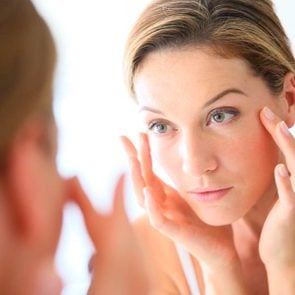A Dietitian Just Listed the 7 Best Foods to Keep Your Skin Young and Healthy
Updated: Oct. 19, 2022
Beauty really does come from within, our dermatology and dietetics experts say. Here's what they say you can eat to make health spring eternal.
As your body’s largest organ, your skin offers subtle clues into the state of your general health. There are cases in which an inflammatory condition, such as acne or rosacea, can indicate that a dietary choice doesn’t quite agree with your system. In other instances, skin yellowing can be a warning sign of liver troubles. At the same time, the American Academy of Dermatology notes that symptoms such as skin tags or a change in skin texture can be just a couple of diabetes warning signs.
That’s why it’s important to understand how significantly your lifestyle choices influence the health and appearance of your skin—it’s an inextricable link. Case in point: In 2015, a study published in the peer-reviewed journal Aging Cell suggested that regular exercise can minimize age-associated skin changes—while smoking accelerates them, researchers cautioned in 2007 via the Journal of Dermatological Science.
What’s more, good nutrition is essential for every function of your skin, as Isa Kujawski, MPH, RDN, founder of Mea Nutrition in Washington, D.C., tells The Healthy. “The skin relies on nutrients to maintain balance, function, and structural integrity,” Kujawski explains. So, for better or worse, what you put in your body is likely to shine through.
Thinking about cutting down on your meat intake? Here’s what happens to your skin when you stop eating meat.
“How does my diet affect my skin?”
Feeding your skin with the nutrients it needs is one of the most powerful ways to promote a healthy glow and limit signs of aging. In particular, natural, unprocessed, living foods supply your skin with nourishment.
As Kara Burnstine, MS, RD, LDN, CDCES—a registered dietitian at Pritikin Longevity Center—tells us, certain nutrients can promote good skin elasticity, hydration, and tissue function (all of which preserve youthful-looking skin) while reducing the damaging effects of processes like inflammation. “Whole foods, like fruits and vegetables, do wonders for the skin,” Burnstine says. This is because many fruits and vegetables are rich in antioxidants, which help the skin repair itself and do away with visible damage. Antioxidants also neutralize free radicals, or molecules that can cause damage—and therefore, aging—on the deeper cellular level.
“On the flip-side, highly processed foods like pizza, fried foods, and chips have little nutritional value and can cause inflammation in the skin,” Burnstine says. This inflammation can lead to skin issues, ranging from pimples to dryness and wrinkling.
And don’t forget about hydration! “Regular water intake is essential for maintaining the skin’s balance and tissue function,” Kujawski adds.
Want to keep your skin extra-supple? Here are ways to stay hydrated, besides drinking water.
“What are the best foods to keep my skin healthy?”
The key, Kujawski says, is nutrient diversity—and you can only get that from a balanced diet rich in a variety of natural foods. Some of these stand out in their ability to go the extra mile for your skin health.
So if you’re on a mission for perpetually radiant skin, here are seven of the best anti-aging foods to get you started.
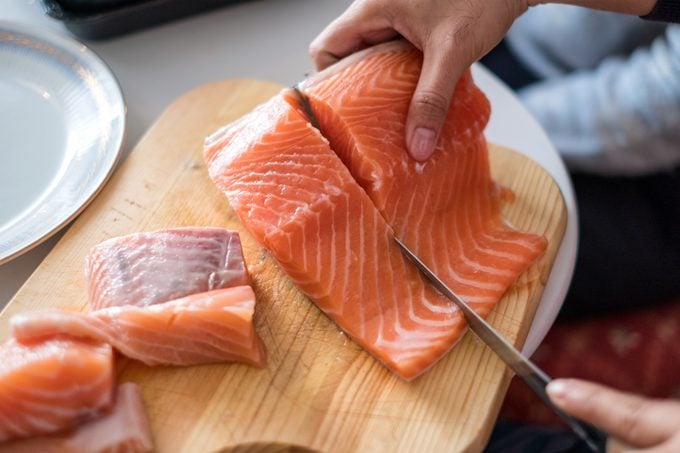
Fatty fish
Oily fish like salmon, mackerel, and herring are packed with omega-3 fatty acids, which are nutrients involved in healthy processes throughout the body (including protecting you against heart disease).
First off, foods that contain omega-3 fatty acids help keep inflammation at bay—a big win for your skin.
Further, a 2011 study in Japan also showed that these fatty acids can improve and protect your skin barrier function, a crucial component of soft, youthful skin that keeps moisture in and damaging irritants out.
Not a huge fish fan? Not a problem. Some plant-based foods, like walnuts, flaxseeds, and more, provide you with these beneficial fatty acids, too. Add these to your grocery list of the best omega-3 foods.
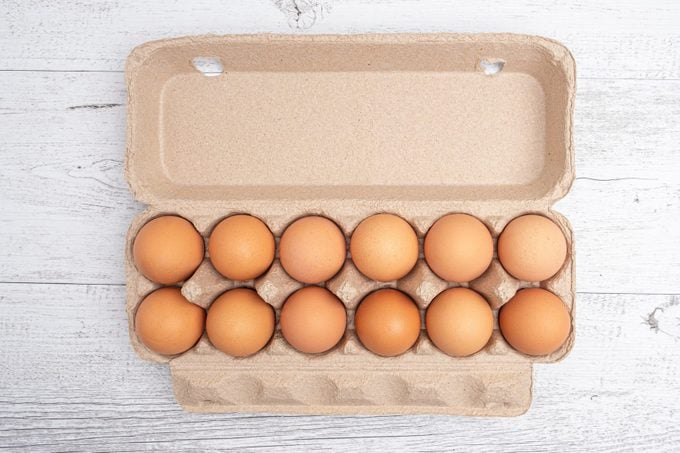
Eggs
Interesting research published in The American Journal of Clinical Nutrition found that individuals who ate less protein tended to have more fragile, wrinkle-prone skin. Dietary protein is essential for your body to produce its own proteins, like elastin and collagen, which keep your skin strong, flexible, and youthfully plump.
Eggs happen to be one of the best available sources of high-quality, complete protein…however, they’re far from the only option to net protein’s anti-aging benefits. Here are dozens of creative ways nutritionists sneak more protein into their diets.

Pumpkin
Excess sun exposure is one of the top contributors to premature signs of aging, and Burnstine says that vitamin A is one of the best dietary defenders against the sun’s harmful ultraviolet (UV) rays.
Some research has explained why: vitamin A actually absorbs UV radiation. And while pumpkin is a powerhouse source of vitamin A, this beloved squash also contains plenty of vitamins E and C—which more research has found also protects the skin from UV damage. Other great sources of vitamin A? Try sweet potatoes and carrots, Burnstine suggests.
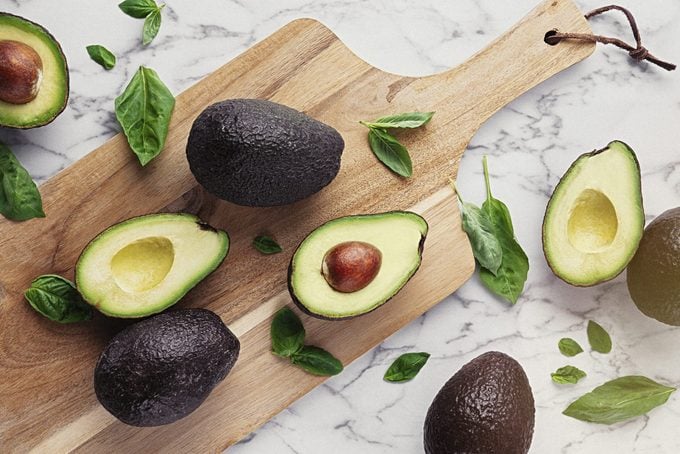
Avocado
Are you ready for this one? Avocados contain a whole handful of these nutritional zingers for your skin. To start, an avocado delivers omega-3 fatty acids, vitamin A, vitamin C, and vitamin E.
A 2022 study in the Journal of Cosmetic Dermatology also asserted that avocados contain lectin, zeaxanthin, and B vitamins. These can help increase skin elasticity and firmness as we age.
To that, we give you 16 avocado recipes that belong in your repertoire. (Seriously, try a couple of these. You’re welcome.)
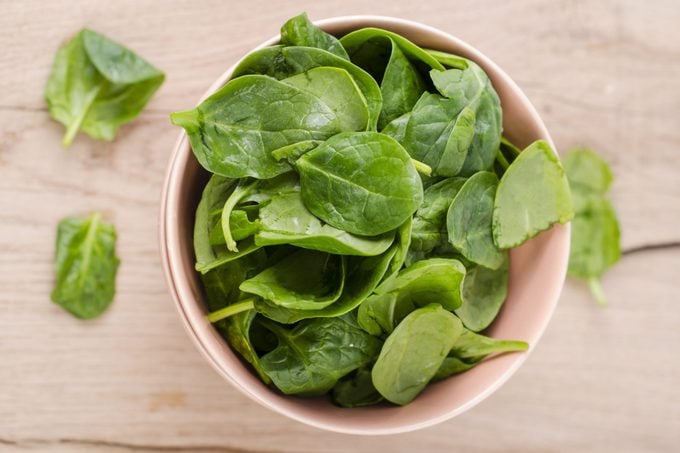
Leafy greens
One more reason to load up your smoothie with more spinach: The high levels of vitamin C in leafy greens may help protect against sun damage, but this nutrient is also essential for your body to create collagen, Burnstine explains. In fact, people who eat more vitamin C tend to have a better skin appearance and “notable decreases” in skin wrinkling, according to Oregon State University’s Linus Pauling Institute.
So, don’t stop at leafy greens—load up on other anti-aging fruits and vegetables like apples, oranges, red bell peppers, tomatoes, broccoli, and cauliflower. (Dietitians even say you might enjoy more vitamin C from trying any of their recommendations for the best cauliflower pizza crusts.)
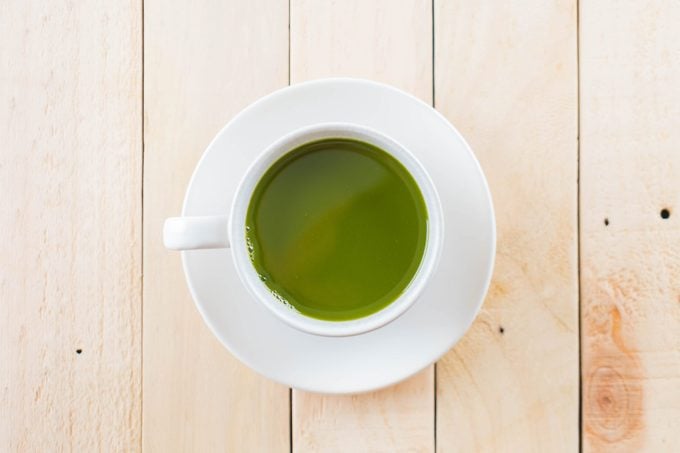
Green Tea
“Green tea has been shown to improve moisture, roughness, thickness, and elasticity in the skin,” Burnstine says.
Also, 2017 research published in Critical Reviews in Food Science and Nutrition added another skin-healthy benefit of green tea: Its plant-based antioxidants, called “polyphenols,” may help keep your complexion clear—potentially preventing age-related skin pigmentation and sun-induced freckles.
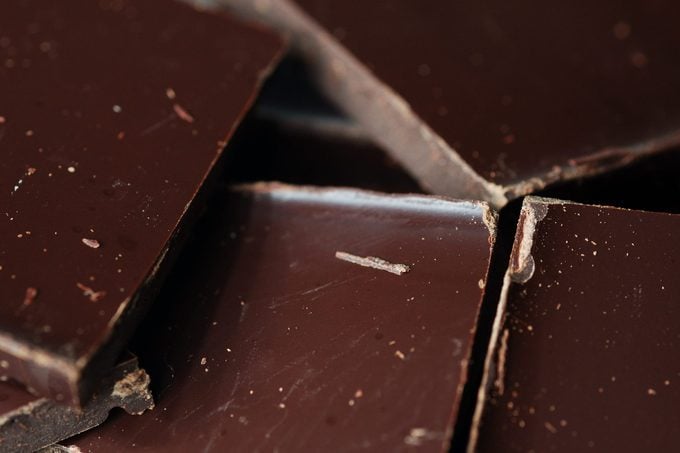
Dark chocolate
Burnstine saves the best news for last: It turns out, chocolate is great for your skin. “It’s been shown to improve skin elasticity and facial wrinkles with its high content of flavanols and [other] antioxidants.”
Say no more, right? But we will: A study published in the Nutrition Journal found that chocolate’s antioxidants may even help protect the skin against UV damage. “Remember, the darker the chocolate, the greater the benefit,” Burnstine says. Her rec? “Go for 70 percent dark chocolate or higher.”
Get skin-healthy insights and so much more from The Healthy newsletter, Facebook, and Instagram. Keep reading:
- Dermatologists Say This 1970s Anti-Aging Ingredient Is Still the Gold Standard for Gorgeous Skin
- Nutrition Pros Just Revealed What 12 Common Food Cravings Secretly Suggest about Your Health
- The 12 Vitamin K-Richest Foods for Healthy Aging, from a Nutritional Biochemist
- Skin-Tightening Treatments in 2022 That Can Take Years Off Your Face




















